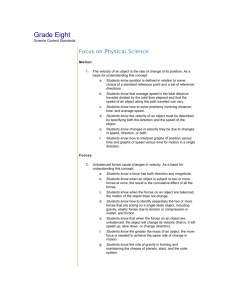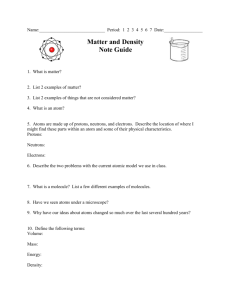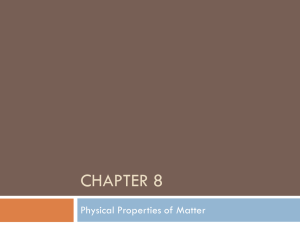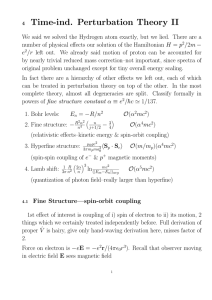Rudiments of the Structure of Matter
advertisement
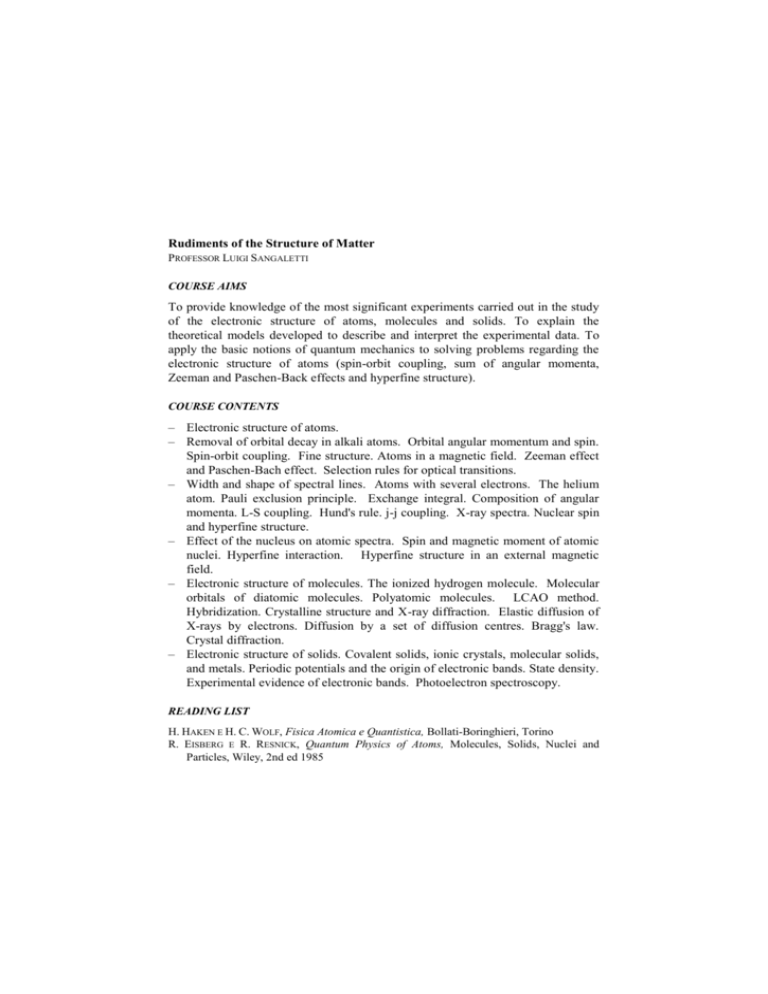
Rudiments of the Structure of Matter PROFESSOR LUIGI SANGALETTI COURSE AIMS To provide knowledge of the most significant experiments carried out in the study of the electronic structure of atoms, molecules and solids. To explain the theoretical models developed to describe and interpret the experimental data. To apply the basic notions of quantum mechanics to solving problems regarding the electronic structure of atoms (spin-orbit coupling, sum of angular momenta, Zeeman and Paschen-Back effects and hyperfine structure). COURSE CONTENTS – Electronic structure of atoms. – Removal of orbital decay in alkali atoms. Orbital angular momentum and spin. Spin-orbit coupling. Fine structure. Atoms in a magnetic field. Zeeman effect and Paschen-Bach effect. Selection rules for optical transitions. – Width and shape of spectral lines. Atoms with several electrons. The helium atom. Pauli exclusion principle. Exchange integral. Composition of angular momenta. L-S coupling. Hund's rule. j-j coupling. X-ray spectra. Nuclear spin and hyperfine structure. – Effect of the nucleus on atomic spectra. Spin and magnetic moment of atomic nuclei. Hyperfine interaction. Hyperfine structure in an external magnetic field. – Electronic structure of molecules. The ionized hydrogen molecule. Molecular orbitals of diatomic molecules. Polyatomic molecules. LCAO method. Hybridization. Crystalline structure and X-ray diffraction. Elastic diffusion of X-rays by electrons. Diffusion by a set of diffusion centres. Bragg's law. Crystal diffraction. – Electronic structure of solids. Covalent solids, ionic crystals, molecular solids, and metals. Periodic potentials and the origin of electronic bands. State density. Experimental evidence of electronic bands. Photoelectron spectroscopy. READING LIST H. HAKEN E H. C. WOLF, Fisica Atomica e Quantistica, Bollati-Boringhieri, Torino R. EISBERG E R. RESNICK, Quantum Physics of Atoms, Molecules, Solids, Nuclei and Particles, Wiley, 2nd ed 1985 TEACHING METHOD Lectures (about 24 hours) Class exercises (about 16 hours) Course material available from the professor's web site. ASSESSMENT METHOD Preliminary written examination followed by an oral examination. Oral examination. NOTES Further information can be found on the lecturer's webpage http://www2.unicatt.it/unicattolica/docenti/index.html or on the Faculty notice board. at






